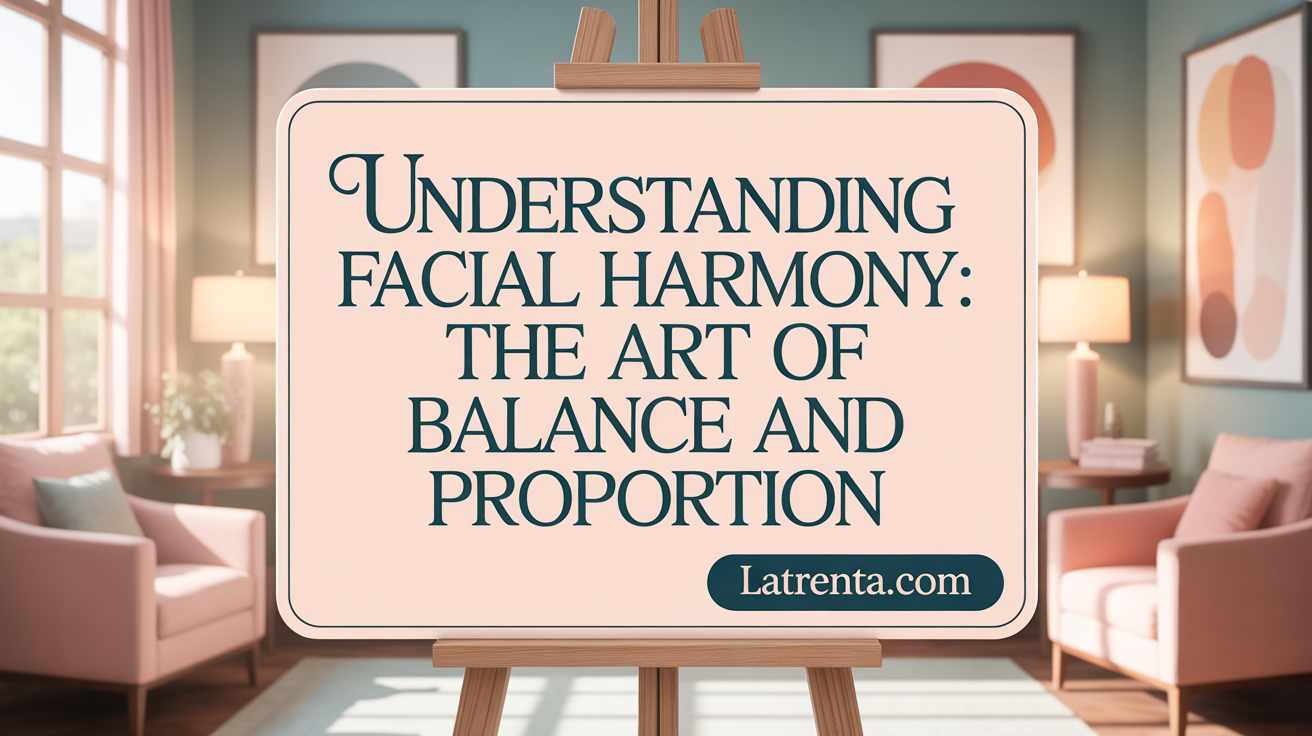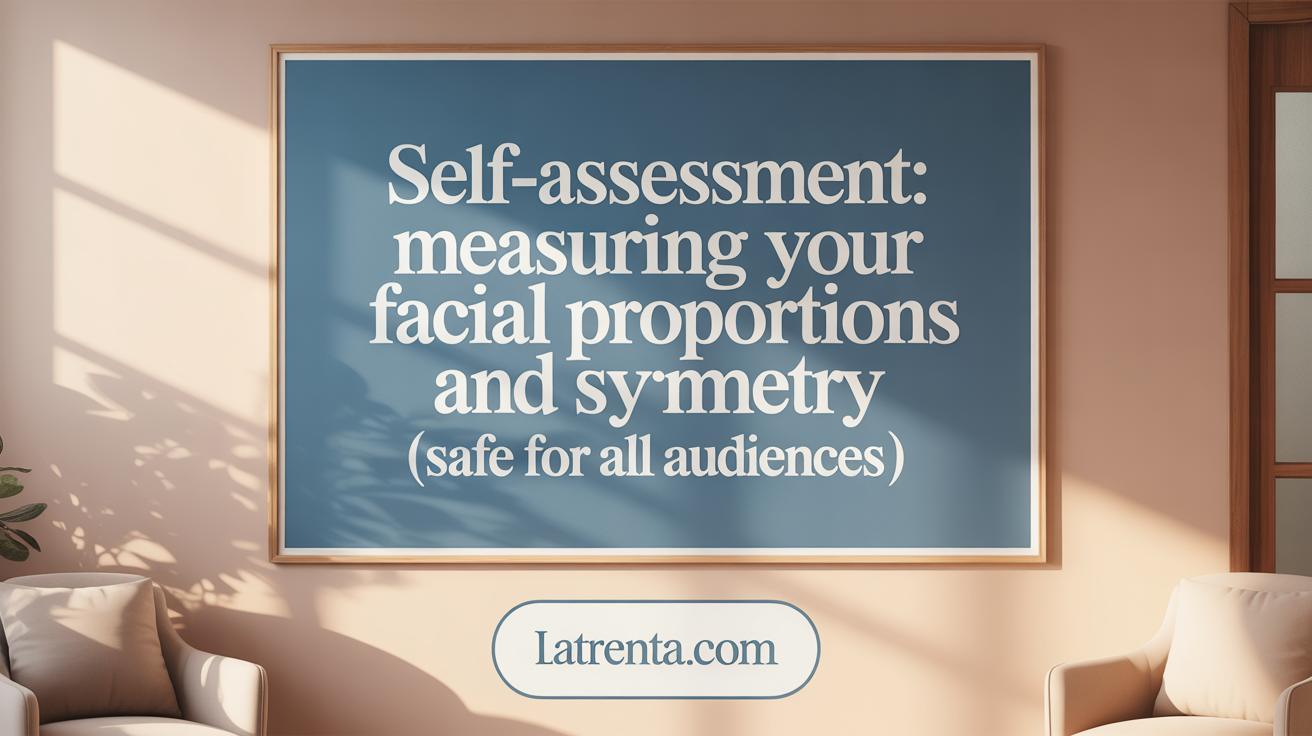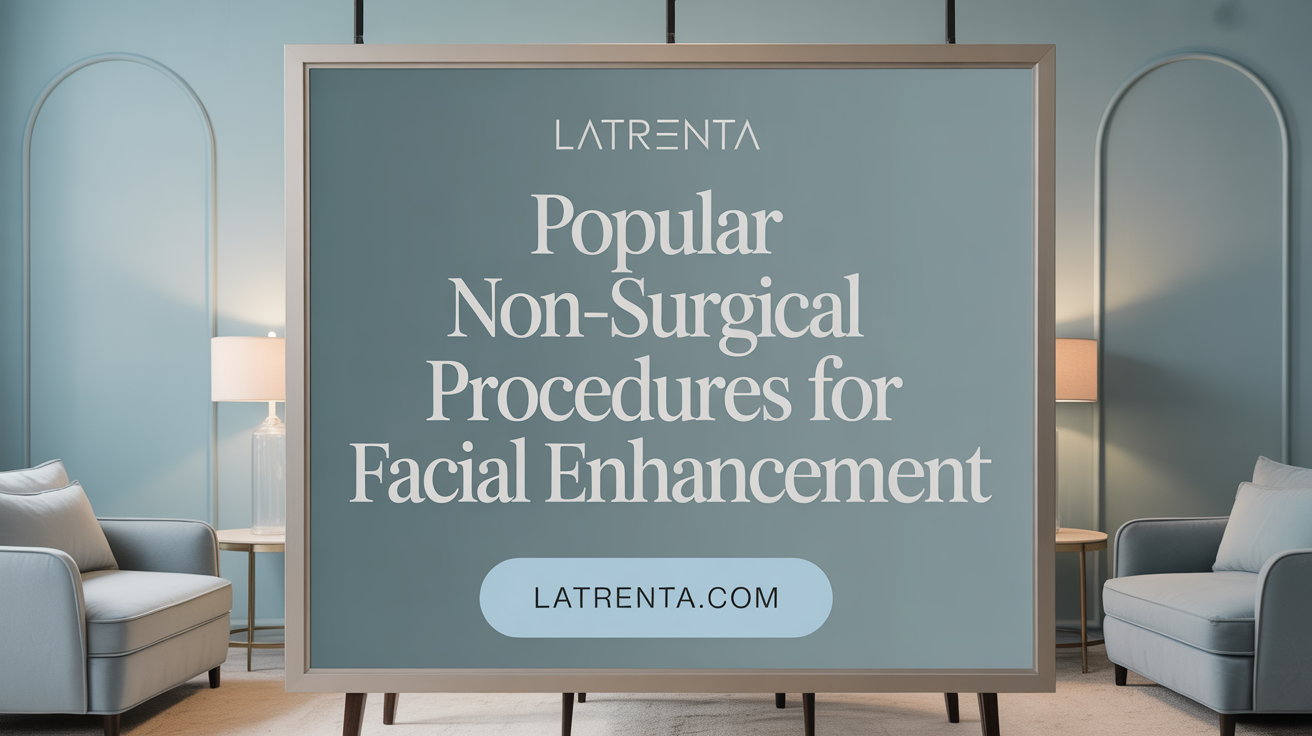Understanding Facial Harmony: Foundations of Beauty and Balance
Facial harmony is the artistry of achieving balance and proportion among the features of the face, creating a natural and aesthetically pleasing appearance. Rooted in principles of anatomy, art, and scientific measurements like the golden ratio, facial harmony transcends cultural ideals to enhance self-confidence and social presence. This article explores how modern non-surgical tools can design facial harmony, offering natural enhancements through minimally invasive treatments. Readers will gain insights into assessing their own facial proportions, understand the range of non-surgical options available, and discover how these innovative techniques can serve as alternatives or complements to surgical procedures.
The Science and Aesthetics Behind Facial Harmony

What is the meaning of facial harmony?
Facial harmony is the artful and balanced arrangement of a person's facial features, creating a natural and aesthetically appealing appearance. It is based on principles from anatomy, art, and scientific measurements, aiming for features that complement each other seamlessly.
This concept involves proportions, symmetry, and alignment among key features such as the eyes, nose, lips, jawline, and cheeks. When these elements are proportionate and well-balanced, a face appears attractive and harmonious.
Achieving facial harmony often employs the golden ratio, approximately 1.618, as a guideline for ideal proportions. For example, the distances between features or the size ratios of different facial parts are measured against this ratio to enhance aesthetic appeal.
Cosmetic procedures like rhinoplasty, fillers, and contouring are commonly used to improve or restore harmony, especially as natural aging or weight changes can lead to volume loss or changes in facial structure.
At its core, facial harmony influences perceptions of beauty, boosts self-confidence, and can positively affect social interactions. While standards vary across cultures and individuals, the goal remains creating a balanced, proportional, and natural look that enhances overall facial symmetry.
Assessing Your Own Facial Harmony

How can you determine your facial harmony?
Assessing facial harmony involves examining the proportion and balance of your facial features to see how they work together aesthetically. One useful guide is the Golden Ratio, approximately 1.618, which has been associated with beauty and harmony for centuries.
Techniques for measuring facial proportions include using a ruler or caliper to measure distances between key features—such as the width of the nose, the length of the lips, or the distance between the eyes—and then comparing these measurements to each other. A harmonious face often has features that closely follow the Golden Ratio.
Using facial thirds and fifths for symmetry analysis helps break down the face into manageable sections. The face can be divided into three horizontal parts: from the hairline to the brow, from the brow to the base of the nose, and from the base of the nose to the chin. Ideally, these sections should be proportionate, with each making up roughly one-third of the face.
Vertically, the face can be divided into five equal parts from the hairline to the chin, guiding the placement of features such as the eyes, nose, and mouth. For example, the width of the face should be roughly five eye-widths, and the position of the nose and lips should align proportionally within these sections.
Influence of nose, chin, and other features on overall harmony is substantial. The nose should complement other features in size and shape, often following the Golden Ratio for aesthetic appeal. Similarly, a balanced chin and jawline support overall facial proportion.
How professional evaluation complements self-assessment is vital. While self-measurements can provide insight, consulting with a qualified aesthetic professional or plastic surgeon ensures a more accurate assessment. Experts consider subtle asymmetries and individual facial dynamics that might not be obvious to untrained eyes.
Combining personal measurement with professional evaluation fosters a comprehensive understanding of your facial harmony, enabling tailored aesthetic enhancements that respect your unique features.
For further reference, you can search "how to measure facial harmony golden ratio face thirds fifths" to find guides and tools that assist in this self-assessment process.
Non-Surgical Techniques for Enhancing Facial Harmony

Is it possible to change facial features without surgery?
Yes, it is entirely possible to enhance or alter facial features without resorting to surgical procedures. Advances in aesthetic medicine have made it feasible to achieve significant improvements through non-invasive or minimally invasive methods.
Dermal fillers, especially those based on hyaluronic acid, are popular for adding volume and contouring specific facial areas such as the cheeks, chin, lips, and jawline. These fillers can correct asymmetries, enhance facial projection, and create a more balanced profile. The results are immediate, adjustable, and reversible, with effects lasting from around six months to two years depending on the treatment.
Botox and other neuromodulators like Dysport relax overactive muscles that cause dynamic wrinkles or facial asymmetry. By softening muscles such as those in the forehead, around the eyes, or near the jaw, practitioners can promote symmetry and a more harmonious appearance. These injections typically last three to four months but can be repeated for ongoing benefits.
Additional options include skin rejuvenation treatments like laser therapy, microneedling with platelet-rich plasma (PRP), and chemical peels. These procedures stimulate collagen production, improve skin texture, and reduce discoloration, contributing to a youthful and refreshed look.
Radiofrequency devices, such as ThermiSmooth and Ultherapy, use heat energy to tighten the skin and promote collagen growth. These treatments are excellent for lifting sagging skin on the face and neck without surgery.
Apart from clinical interventions, natural methods like facial exercises may support muscle strength and tone. Regular practice of eyebrow lifts, cheek lifts, and jawline exercises can help enhance muscle firmness and overall facial balance.
Overall, these non-surgical approaches provide safe, effective, and personalized options to improve facial harmony, especially for individuals with mild to moderate concerns. Most treatments involve minimal downtime, making them suitable for those with busy lifestyles.
Factors affecting success include the skill of the practitioner, the chosen products, individual facial anatomy, and compliance with aftercare. Combining these techniques can also create a comprehensive, harmonious facial appearance tailored to each person's unique features.
More Information Search:
"non surgical facial enhancement techniques dermal fillers botox skin treatments"
Improving Facial Harmony Without Surgery: Strategies and Benefits

How can you improve facial harmony without surgery?
Achieving facial harmony without undergoing surgery is possible through a variety of non-invasive treatments and techniques. One of the simplest methods is makeup contouring, which uses strategic application of bronzers, highlighters, and concealers to create the illusion of symmetry and balanced features. This approach can instantly enhance facial proportions and is easily customizable.
Another effective method involves dermal fillers, typically made of hyaluronic acid, which are used to add volume to specific areas such as the cheeks, lips, or jawline. These fillers help sculpt facial features, restore youthful fullness, and balance proportions for a more harmonious appearance. Since the results are reversible, patients can adjust the volume as desired.
Botox and other neuromodulators can relax overactive muscles that may cause asymmetry or contribute to dynamic wrinkles. For instance, relaxing muscles in the forehead or around the jaw can soften uneven expressions and improve balance between facial muscles.
Complementing these tools are skin rejuvenation procedures like laser treatments, microneedling, or RF microneedling. These therapies target skin texture issues, tighten sagging skin, and reduce scars or fine lines, contributing to a smoother, more balanced face.
For skin tightening, minimally invasive options like Ultherapy use ultrasound energy to stimulate collagen production gradually, lifting and firming the skin with almost no downtime. These treatments rely on the body's natural healing process to enhance facial contours over time.
Collectively, these non-surgical options emphasize subtle enhancements that preserve natural features while promoting symmetry and proportion. They are ideal for individuals seeking less invasive alternatives to surgery, offering quick recovery, customizable results, and the flexibility to maintain or adjust their appearance.
Common Non-Surgical Procedures in Facial Balancing

Dermal Fillers and Hyaluronic Acid Products (Juvéderm, Restylane)
Non-surgical facial balancing often begins with dermal fillers, especially those based on hyaluronic acid such as Juvéderm and Restylane. These fillers are versatile and can add volume to areas like the cheeks, lips, and jawline, creating a more harmonious facial proportion.
The benefits include immediate results, minimal discomfort, and reversibility if needed. Fillers help improve facial symmetry, restore lost volume, and subtly contour features without surgery. Their effects generally last from 6 months up to 2 years, making them a popular choice for those seeking natural enhancement.
Non-Surgical Rhinoplasty and Chin Augmentation
Non-surgical procedures extend to reshaping the nose and chin using dermal fillers. Non-surgical rhinoplasty involves injecting fillers to correct minor nasal deformities, heighten the nasal bridge, or refine the tip, all while avoiding the risks and downtime of traditional surgery.
Similarly, non-surgical chin augmentation enhances chin projection and shape, balancing facial proportions. Precise filler placement can improve profile harmony, especially for patients with a recessed or flat chin, contributing to overall facial balance.
Masseter Botox for Jaw Slimming and Contouring
Injecting Botox into the masseter muscles offers a non-invasive way to slim and contour the jawline. This technique relaxes overdeveloped muscles, reducing a square or wide jaw appearance, and creates a more refined facial outline.
Results develop over several weeks and typically last around 4-6 months. The procedure is quick, with no downtime, making it suitable for multiple aesthetic goals, including facial slimming and smoothing of muscle-related asymmetries.
ThermiSmooth and Radiofrequency Treatments for Tightening
RF-based treatments like ThermiSmooth utilize radiofrequency energy to stimulate collagen production, resulting in skin tightening and improved facial contours.
These treatments are non-invasive, painless, and require no recovery time. They are especially effective for mild skin laxity, helping address sagging, smoothing lines, and enhancing overall facial harmony.
Combination Treatments for Face Rejuvenation
Combining these procedures can deliver comprehensive facial rejuvenation. For example, dermal fillers can restore volume, while Botox relaxes muscles for a softer look. RF treatments tighten skin, contributing to a youthful appearance.
Employing multiple modalities allows for personalized plans that target individual concerns, enhance natural features, and maintain a balanced, harmonious facial aesthetic with minimal downtime.
| Procedure | Main Benefits | Typical Duration | Suitable For |
|---|---|---|---|
| Dermal Fillers | Volume restoration, contouring | 6 months to 2 years | Mild to moderate asymmetries |
| Non-surgical Rhinoplasty | Nasal reshaping without surgery | Immediate | Nose refinement |
| Chin Augmentation | Profile balance enhancement | Immediate | Flat or recessed chin |
| Botox/Masseter | Jaw slimming, muscle relaxation | 4-6 months | Wide jaw, square face |
| RF Skin Tightening | Skin tightening, smoothing | Up to 1 hour | Mild sagging |
These non-surgical procedures are increasingly popular for their safety, natural results, and convenience, making them effective options for achieving facial harmony without downtime.
Personalizing Non-Surgical Treatment Plans
How do I assess facial shape and unique features?
To create an effective treatment plan, practitioners first evaluate the overall facial shape—whether oval, round, square, heart, or diamond—and specific features such as cheeks, jawline, and nose. This involves analyzing proportions, symmetry, and individual characteristics to understand what adjustments will enhance harmonic balance.
How do treatments vary for different facial types?
Different facial shapes benefit from tailored approaches. For example, those with a square face might focus on softening jawline contours using fillers or Botox, while heart-shaped faces may emphasize enhancing the chin and balancing the forehead with subtle injections. Oval and round faces often require minimal adjustments to preserve natural harmony.
Are there gender-specific techniques or preferences?
Indeed, aesthetic goals can differ between genders. Women often seek softer, more delicate contouring, while men prefer a defined jawline and chin. Injector techniques are adjusted accordingly—using specific injection depths, volumes, and target areas—to highlight natural masculinity or femininity while maintaining authenticity.
Why is consultation with an expert important?
A thorough consultation ensures a personalized approach. Skilled practitioners like Dr. Adrian Lo and Anne Newbert evaluate facial anatomy, discuss aesthetic goals, and devise a treatment plan that combines non-surgical options such as dermal fillers, Botox, and skin therapies. This collaborative process ensures natural-looking results tailored to each individual.
What about realistic expectations and treatment limitations?
While non-surgical methods can significantly improve facial harmony, they have limitations. Effects are temporary, typically lasting 6 months to 2 years, and subtle enhancements are more achievable than drastic changes. Clear communication about achievable outcomes and maintaining realistic expectations are vital for patient satisfaction.
Harnessing a personalized approach ensures that each patient’s unique facial features are complemented thoughtfully, balancing proportions, and enhancing natural beauty seamlessly.
Comparing Surgical and Non-Surgical Options for Facial Harmony
What surgical procedures help improve facial harmony?
Surgical options specifically designed to enhance facial balance include rhinoplasty (nose reshaping), chin augmentation, facelifts, brow lifts, facial implants, and eyelid lifts. These procedures aim to correct structural imbalances by reshaping bones, repositioning tissues, or adding volume. For example, rhinoplasty adjusts nasal proportions to better fit other facial features, while chin implants enhance jawline projection for a more balanced profile.
What are the advantages and limitations of surgical treatments?
Surgical procedures often provide longer-lasting or permanent results, making them ideal for significant facial imbalances. They can address bone structure, excess skin, and soft tissue volume comprehensively. However, they involve higher costs, longer recovery times, and increased risks such as infection, scarring, and anesthesia complications. These procedures typically require general anesthesia and may involve temporary swelling and discomfort.
What non-surgical treatments are available and what are their typical outcomes?
Non-surgical options include dermal fillers, Botox, neuromodulators, skin treatments, and minimally invasive lifts. Fillers made of hyaluronic acid restore volume, correct asymmetry, and subtly contour features like cheeks, lips, and jawline. Botox relaxes overactive muscles to soften expression lines and improve facial symmetry.
These methods are less invasive, have minimal downtime, and produce immediate or gradual natural results. However, their effects are temporary, lasting from 3 to 24 months, requiring repeat treatments to maintain the appearance.
What are the risks, costs, and recovery considerations for each approach?
Surgical options carry higher risks such as bleeding, infection, and unfavorable scarring. They involve longer recovery periods, sometimes from a week to several weeks, depending on the procedure. Costs tend to be higher due to anesthesia, facility fees, and surgeon’s expertise.
Non-surgical treatments are generally safer, with minor risks like bruising, swelling, or redness. They require no significant downtime, allowing patients to resume daily activities quickly. Costs are lower per session, but multiple treatments may be necessary over time.
How can combining surgical and non-surgical methods optimize facial harmony?
A personalized approach often involves combining both methods for superior results. For example, a rhinoplasty may be complemented with dermal fillers to refine the chin and lips, achieving harmonious proportions. Combining fat grafting or a facelift with non-invasive skin tightening can restore volume and lift without extensive surgery.
This strategic blending allows practitioners to tailor treatments based on individual anatomy and aesthetic goals, balancing permanence with flexibility and minimizing recovery time while maximizing natural beauty.
Emerging Trends and Educational Resources in Non-Surgical Facial Harmony
AI-assisted facial mapping and treatment planning
Innovative technologies such as AI-assisted facial mapping are revolutionizing how practitioners plan aesthetic procedures. These tools analyze facial proportions and symmetry using advanced algorithms, enabling precise customization of treatments. AI helps predict outcomes and enhances communication with patients, leading to more natural results.
Micro-dosing and combination therapies with neurotoxins
A trending approach in 2025 involves micro-dosing of neurotoxins like Botox and Dysport. Small, strategic amounts are injected to target specific muscles, softening expressions while maintaining natural mobility. Combining neurotoxin treatments with dermal fillers or skin boosters enhances overall facial harmony, providing subtle yet effective rejuvenation.
Gender-neutral approaches and advancing techniques
The industry is embracing more inclusive, gender-neutral methods that focus on individual facial features rather than traditional standards. Techniques such as gender-specific filler placement and contouring aim to balance features harmoniously, respecting personal identity. Advanced procedures include non-surgical jawline slimming and forehead contouring adaptable to any gender.
Importance of qualified practitioners and patient education
Proper results depend heavily on skilled practitioners with comprehensive training. Educating patients about realistic expectations and the nuances of facial harmony is essential. Clinics emphasize transparent consultations, detailed assessments, and tailored treatment plans to ensure safety and satisfaction.
Resources for learning more about designing facial harmony
For those interested in exploring further, reputable educational resources include online courses, professional workshops, and scientific publications. Websites like Aesthetics 360°, and organizations such as ASAPS and ISAPS, provide valuable information, case studies, and training modules to stay updated on the latest in non-surgical facial harmony treatments.
This evolving field combines technology, artistry, and education, ensuring personalized, subtle enhancements that respect each individual's unique beauty.
The Future of Facial Harmony: Enhancing Natural Beauty with Minimally Invasive Tools
Non-surgical tools have revolutionized the way we approach facial harmony, making it accessible to more people seeking subtle and natural enhancements without the downtime or risks of surgery. By understanding foundational principles of balance and proportion, individuals can collaborate with skilled practitioners to tailor treatments that enhance their unique features. As technology advances and techniques evolve, the integration of AI-assisted mapping, personalized micro-dosing, and combination therapies promise even more refined results. Ultimately, designing facial harmony with non-surgical methods empowers individuals to feel confident and radiant in their own skin, celebrating their natural beauty with artistry and science combined.
References
- How to Improve Facial Harmony: Unlocking the Secrets of Aesthetic ...
- Facial Balancing with Fillers: Enhancing Features Without Surgery
- Correcting Facial Asymmetry: Surgical & Non-Surgical Methods
- The Importance of Facial Harmony in Cosmetic Procedures
- Achieving Facial Harmony - Expert Guide to Facial Balancing in ...
- Creating Facial Harmony with Cheek and Mid-Face Fillers
- Achieving Facial Harmony: The Art of Non-Surgical Profile Balancing
